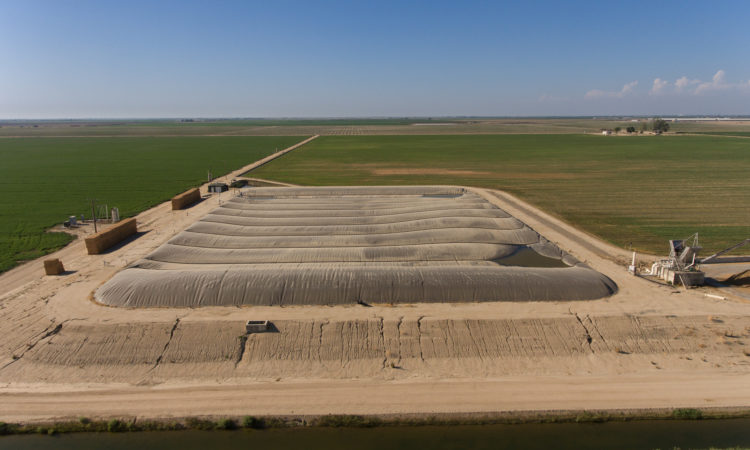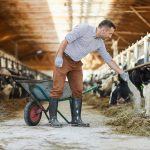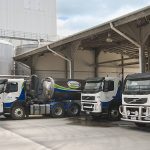
Speaking to AgriLand last month, Dr. Frank Mitloehner – a professor and air quality specialist at the University of California in the city of Davis – highlighted the game-changing emission reduction strides being achieved in the state, which is the largest agricultural state in the US.
With pressure and debate mounting over Irish agriculture’s carbon footprint, this publication decided to find out how California’s farmers, and its agricultural agencies, are collaborating to achieve this landmark – without losing a single livestock unit.
Last September – just as the National Ploughing Championships was getting underway in Fenagh, Co. Carlow – California’s Department of Food and Agriculture (CDFA) awarded almost $102 million – that’s equivalent to around €94 million – in grant funding to dairy methane reduction projects across the state.
These projects – which are part of the state’s ‘Dairy Digester Research and Development Program’ (DDRDP) and its ‘Alternative Manure Management Program’ (AMMP) – aim to reduce greenhouse gas (GHG) emissions from manure on California dairy farms.
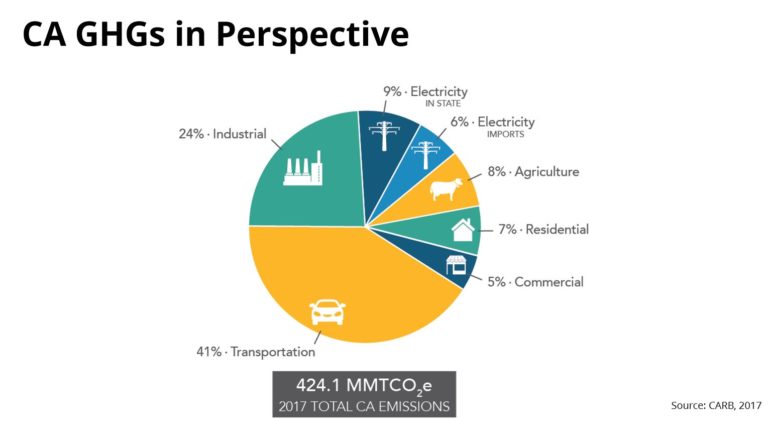
Image source: California’s Air Resources Board
More specifically, this breaks down to 43 DDRDP projects, totaling $67.4 million (around €62 million); 50 AMMP projects, totaling $31.5 million (around €29 million); and three demonstration projects, totaling $3 million (around €2.7 million).
The goal of the projects is to collectively reduce an estimated 789,536 metric tons of GHGs (MTCO2e) per year.
Clean Energy
Making the announcement, California’s department of agriculture secretary Karen Ross said the funding would allow the state’s dairy families to produce “clean, renewable energy”.
“These efforts promote energy-secure economies, which are long-lasting and important contributions to local rural communities and our planet’s well-being,” she said.
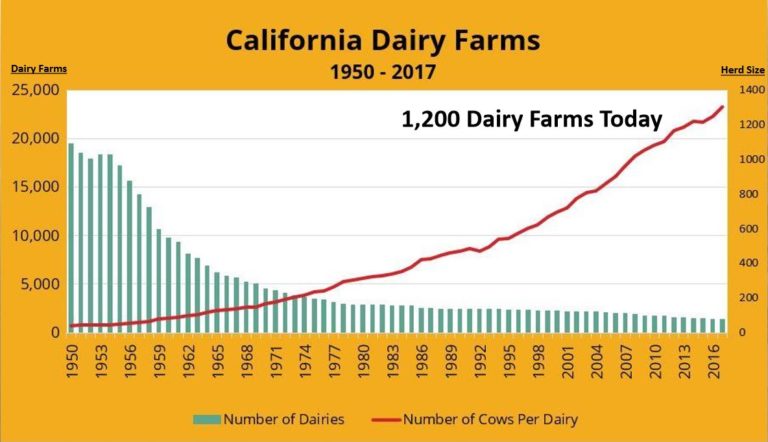
Image source: California Department of Food and Agriculture
Explaining the science behind the initiative, the department outlined how dairy manure produces methane when it decomposes; whilst also outlining the significant potential of these dairy digesters.
Methane – which is both belched out and comes out in animal manure – is a powerful GHG that traps 25 times more heat in the atmosphere than carbon dioxide (CO2) within a 100-year timeframe, which ultimately contributes to global warming.
However, it is worth noting here that, as Dr. Mitloehner pointed out to AgriLand last month, methane is destroyed in the atmosphere within 10 years through the process of “atmospheric oxidation” – not 1,000 years as is the case with CO2.
As such, the professor says methane is actually “recycled” and “upcycled” through what he describes as the “biogenic carbon cycle”.
Dairy digesters help capture methane emissions and use them to produce electricity or natural gas.
Changing manure management practices so that manure is handled in a dry form (AMMP) also helps to significantly reduce methane emissions (explained further below).
Dairy Families
Since 2015, 213 dairy families in California have participated and contributed to methane reduction efforts through the AMMP and DDRDP programs.
There are currently more than 229 dairy methane reduction projects in operation or under development on California dairy farms.

Image source: Dairy Cares
Together, all DDRDP and AMMP projects are reportedly succeeding in the reduction of an estimated 2.2 million metric tons of GHGs (2.2 MMTCO2e) per year – which is equivalent to removing more than 460,000 cars from the road.
This is approximately 25% of the 2013 California inventory for dairy and livestock manure methane emissions.
These GHG reduction approaches also collectively contribute to the state’s ‘Short-Lived Climate Pollutant Strategy’ under its Senate Bill 1383 – which aims to reduce California’s methane emissions from the dairy and livestock sector to 40% below 2013 levels by 2030.
Financial assistance for the installation of dairy digesters and non-digester projects comes from ‘California Climate Investments’, a statewide initiative that uses cap-and-trade program funds to support the state’s climate goals.
The department and other state agencies are investing these proceeds in projects that reduce GHG emissions and that provide additional benefits to California communities, such as job creation.
Charles Ahelm, chairman of Dairy Cares, a non-profit organisation that advocates for the long-term sustainability of California’s dairy farming families, also equates the state’s prompt progress to “important partnerships” between farmers and state agencies.
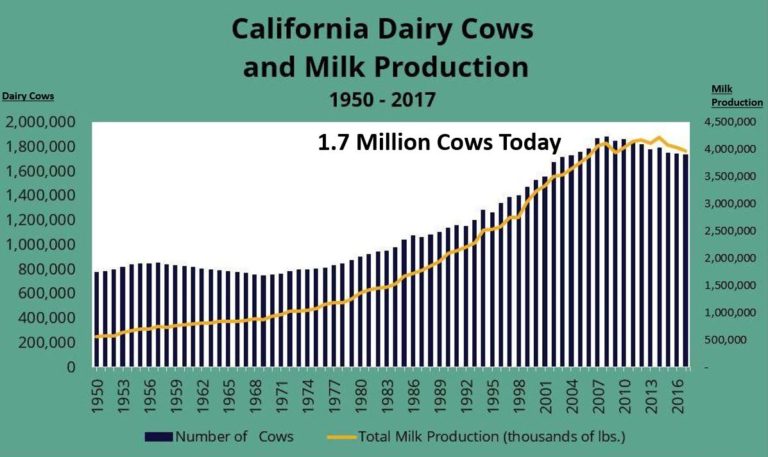
Image source: California Department of Food and Agriculture
“Through this collaboration, we are leading the world in sustainable dairy farm practices.
“By aggressively reducing methane and continuing to do more with less water, fewer fossil fuels and less energy, we will continue to meet challenges and ensure the availability of sustainable and highly-nutritious dairy products that consumers love,” he said.
Farmer Views
Gerben Leyendekker, a Tulare County dairy farmer, voiced his support for the digesters currently being built in California.
“My family is excited to help keep our valley air clean by creating transportation fuel from our dairy,” he said.
The biogas from Leyendekker’s digester will be piped to a centralised biogas upgrading facility that will collect biogas from 11 neighbouring dairies to create carbon-negative, renewable natural gas (RNG).
The clean-burning renewable fuel will be used in heavy-duty trucks, replacing diesel and significantly reducing emissions of NOx – a smog-forming gas.
Samir Sheikh, executive director of the San Joaquin Valley Air Pollution Control District, said these dairy biogas-to-transportation-fuel projects that replace diesel trucks also have the potential to “significantly reduce” transportation emissions in the region.
According to estimates from Dairy Cares digester projects currently under development will soon enable the annual production of enough clean-burning renewable fuel to reduce NOx emissions by more than 1,110 tons each year.
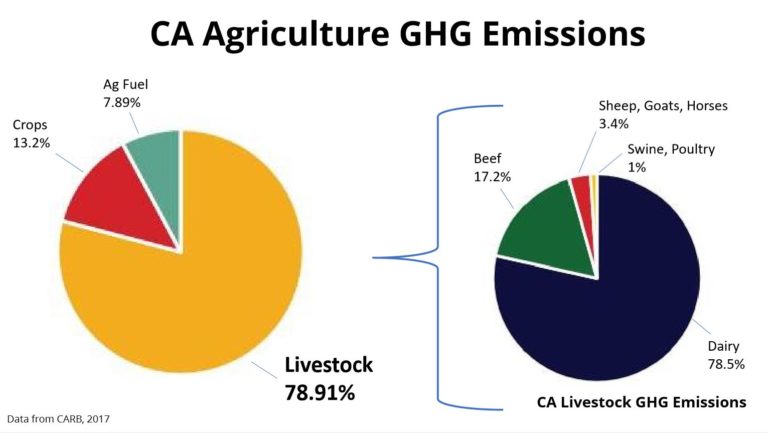
Image source: California Air Resources Board
This estimate is projected to grow significantly as additional projects are built.
As a result, it is clear that California’s dairy farms will not only reduce methane, but will also substantially contribute to the state’s cross-sector clean-air goals.
Manure Management
In addition to digesters, California family dairy farms are also implementing projects that prevent the production of methane from manure management.
These projects include dry-scrape systems, manure separators and compost pack barns, which all reduce methane production on farms.
Like digesters, these projects can provide additional environmental benefits, farmers say.
“Every dairy farmer cares about the environment, but these improvements can be very expensive,” said dairy farmer Richard Wagner, a recent grant recipient from San Joaquin County.
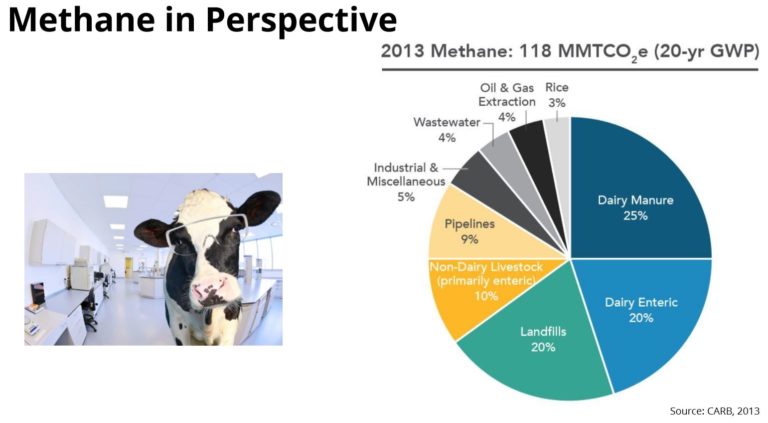
Image source: California Air Resources Board
“We are contributing a significant portion of the total project costs, but without incentive funding from the state, we wouldn’t be able to move forward.
“We are glad to be a part of this effort,” he said.
As the state’s dairy farmers shrink their methane emissions to unprecedented levels, they are also working to improve water conservation and protection, improve air quality, and advance soil health.
These and other sustainability efforts will be highlighted at the ‘California Dairy Sustainability Summit‘, to take place next month on March 25 and 26, in Sacramento.
